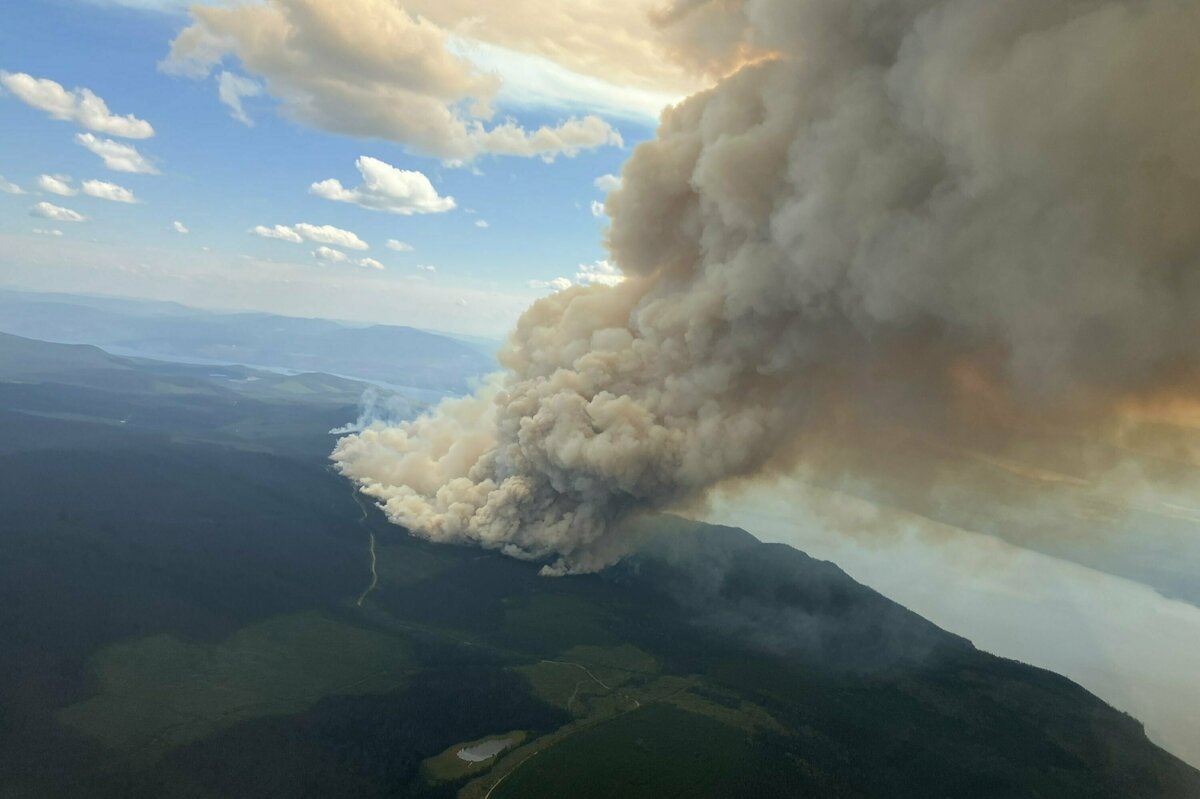Fires in boreal forests are becoming increasingly common. This is one of the central results of a study published on Friday in the specialized journal sciences It has been published. In it, researchers evaluated satellite-based data from 2001 to 2023 and found that carbon emissions from wildfires increased by 60 percent during this period. As a result, forests store less carbon.
According to the study, fires in the so-called boreal forests account for an ever-increasing share of emissions from forest fires. These include forest areas in countries such as Canada, Norway and Russia. There are mainly coniferous forests here, which – due to climate change – are becoming increasingly vulnerable to fires. Due to the increased carbon content in the atmosphere, trees grow faster. This makes the forests become denser. As the weather changes, this leads to more favorable conditions for wildfires.
Better classification of wildfire areas
The researchers were able to find out this by closely examining the factors that lead to forest fires. Elisabeth Dietz, head of the Landscape Fire Laboratory at the University of Göttingen, applauds this: “This extraordinarily detailed study improves the concept of so-called pyromates, which are areas that are similar, on average over the long term, in terms of how they occur.” . Dietze explains how often, how large fires occur, and how long the fire season lasts.
“What is interesting and novel is that important factors are being taken into account that previously received less attention,” says Dietz. “These include, for example, fuel structure and the type and amount of ground and canopy vegetation, which influence whether a fire will remain a ground fire or can ‘climb’ into the canopy through detailed knowledge of causative factors.” Dietz says local actors can take better action against wildfire risks. Depending on the region, this has different impacts, such as targeted forest management through planned burning of ground vegetation.
Man-made climate change causes forest fires
The study also shows the significant impact of climate change on the frequency and severity of wildfires: in all 12 pyres into which the researchers divided the world's forest regions, there is a significant relationship between the occurrence of wildfires and so-called fire weather. This means continued high temperatures, strong winds and low humidity. “These conditions have been shown to be directly linked to climate change,” Dietz says.
Wildfire emissions are not natural
Against this background, the study authors suggest that CO2-Report emissions from wildfires as human-caused in various emissions reports. They have so far been classified as natural emissions. Dietz thinks this is an exciting idea, “even if of course these emissions are not attributable to the countries where the fires are burning, because climate change is happening globally, and we should also keep in mind that emissions from forest fires will also occur.” The increase will be balanced out in the long term because plants regenerate and then release carbon dioxide again2 To register. “But that takes decades,” Dietz says.
The centers of wildfires have shifted
According to the study, forest fires have not only increased in the northern berums, but also decreased in the subtropical berums. Analyzing this development and, if necessary, determining the effectiveness of the policy measures implemented, is now an important next research task, says Elisabeth Dietz.

“Total coffee aficionado. Travel buff. Music ninja. Bacon nerd. Beeraholic.”







More Stories
Exploding Fireball: Find the meteorite fragments
Neuralink's competitor lets blind people see again with an implant
A huge meteorite has hit Earth – four times the size of Mount Everest